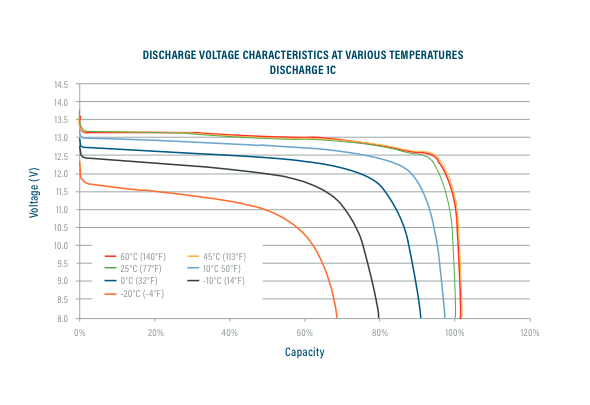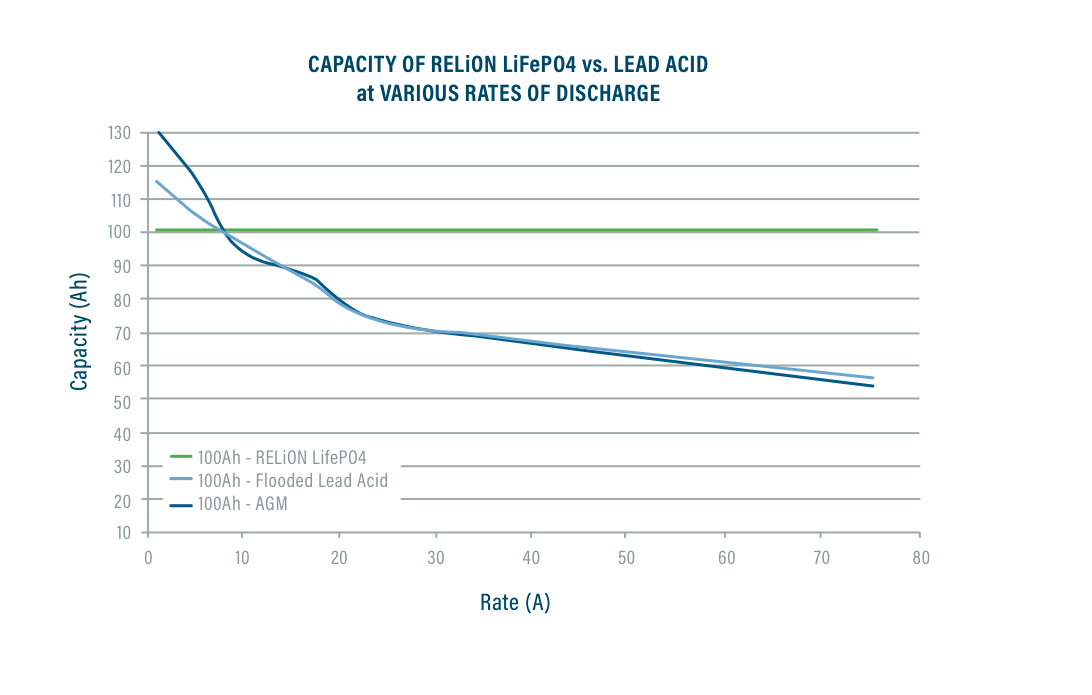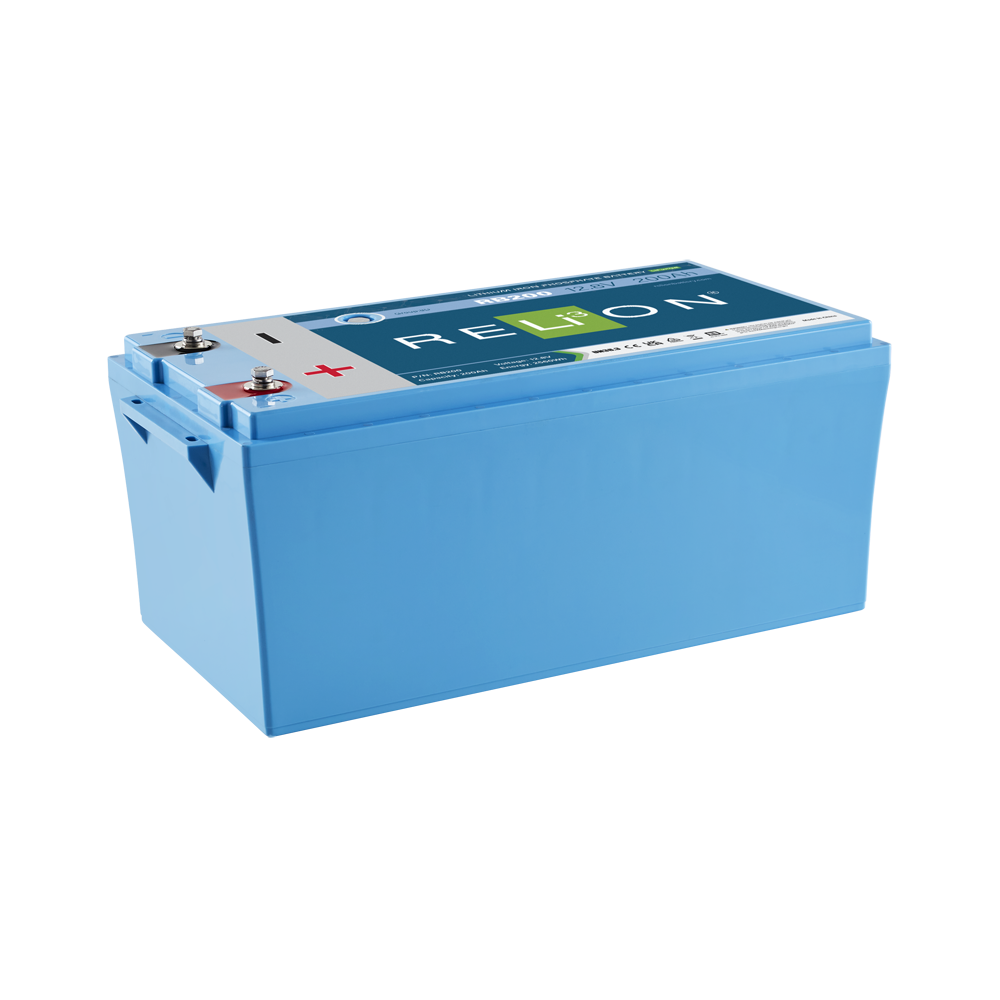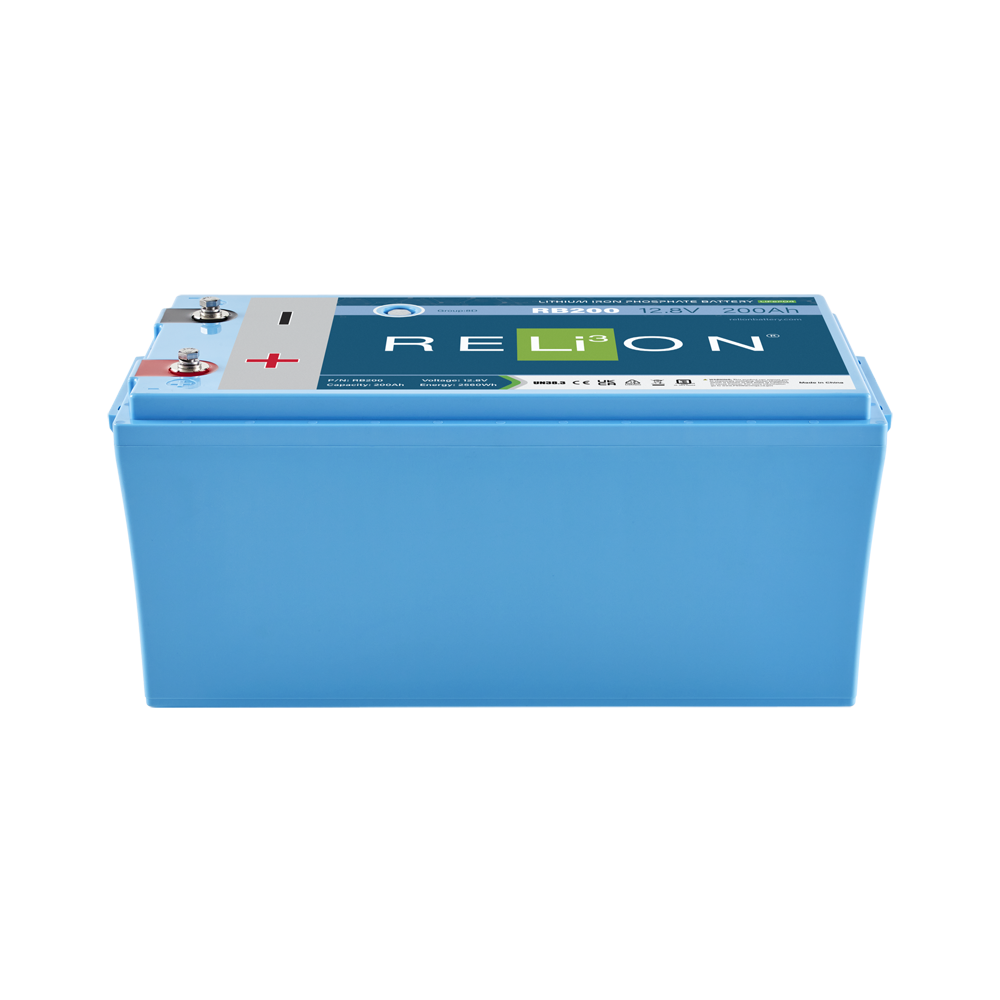Features
Lightweight
RELiON lithium batteries provide more power than lead-acid batteries and are typically half the weight. Boosting both performance and agility on the water.
Temperature Tolerant
Lithium batteries can handle a wide variety of conditions and are even 2.5x more efficient at low temperatures than lead-acid while being able to safely operate up to 149°F (65°C).
Fast Charging
RELiON lithium batteries charge much faster than traditional lead-acid batteries, and they’re packed with more usable energy and up to 10 times longer life so you’re always ready to go!
Long Life
RELiON lithium batteries provide up to 10 times longer life than lead-acid batteries, and they still provide 80% of the rated capacity after 3,500 cycles.
Maintenance Free
RELiON lithium batteries are maintenance-free – no watering, no corrosion. Low self-discharge means the batteries don’t lose capacity when they’re idle, assuring that you have the energy you need, every time you need it.
Constant Power
Full power available throughout discharge. Voltage does not drop like lead-acid.
Partial State of Charge Tolerant
Partial state of charge, known as PSOC, which is a killer of lead-acid batteries, does not affect performance or battery life of a lithium battery. Sometimes batteries don’t get fully charged, or they regularly operate in a partial state of charge. Either way, you can count on RELiON lithium batteries living a long and productive life.
More Usable Capacity
Lead-acid batteries are typically sized up to two times your energy needs to account for extended periods without sun and less usable energy with higher rates of discharge. Plus, you are typically cautioned to limit your use to 50% of the rated capacity, as using more can significantly reduce performance. Lithium batteries provide 100% of their rated capacity, regardless of the rate of discharge. And, you can use it all and still get substantially longer cycle life.
Specifications
Electrical Specifications |
|
|---|---|
| Nominal Voltage | 12.8 V |
| Nominal Capacity | 200 Ah |
| Capacity @ 25 A | 480 min |
| Energy | 2560 Wh |
| Resistance | 30 mΩ @ 50% SOC |
| Efficiency | 99% |
| Self Discharge | <3% per Month |
| Maximum Batteries Connected in Series | 6 |
Mechanical Specifications |
|
|---|---|
| Dimensions (L x W x H) | 20.6 x 10.5 x 8.7” (520.8 x 267.8 x 221 mm) |
| Weight | 61.1 lbs (27.7 kg) |
| Terminal Type | M8 x 1.25 x 2mm |
| Terminal Torque | 80 - 100 in-lbs (9 - 11 N-m) |
| Case Material | ABS & Polycarbonate blend (UL94-V0 flame rating) |
| Enclosure Protection | IP67 |
| Cell Type - Chemistry | Cylindrical - LiFePO4 |
Discharge Specifications |
|
|---|---|
| Maximum Continuous Discharge Current | 100 A |
| Peak Discharge Current | 200 A (7.5 s ±2.5 s) |
| Discharge Over-Current Protection | 280 A ±50 A (9 ±4 ms) |
| Recommended Low Voltage Disconnect | 11.0 V |
| Discharge Under-Voltage Protection | 8.0 V (2.0 ±0.08 vpc) (140 ±60 ms) |
| Reconnect Voltage | 9.2 V (2.3 ±0.1 vpc) |
| Short Circuit Protection Response Time | 200-600 µs |
Charge Specifications |
|
|---|---|
| Recommended Charge Current | 10 A - 50 A |
| Maximum Continuous Charge Current | 100 A |
| Charge Current 32ºF to 14ºF (0 to -10 ºC) | ≤0.1 C (10 A) |
| Charge Current -4ºF to 14ºF (-20 to -10 ºC) | ≤0.05 C (5 A) |
| Recommended Charge Voltage | 14.2 V - 14.6 V |
| BMS Charge Voltage Cut-Off | 15.6 V (3.9 ±0.025 vpc) |
| (1.1 ±0.4 s) | |
| Reconnect Voltage | 15.2 V (3.8 ±0.05 vpc) |
| Balancing Voltage | 14.4 V (3.6 ±0.025 vpc) |
Temperature Specifications |
|
|---|---|
| Discharge Temperature | -4 to 140 ºF (-20 to 60 ºC) |
| Charge Temperature* | -4 to 113 ºF (-20 to 45 ºC) |
| Recommended Storage Temperature | -4 to 140 ºF (-20 to 60 ºC) |
| BMS High Temperature Cut-Off | 176 ºF (80 ºC) |
| Reconnect Temperature | 122 ºF (50 ºC) |
| *Refer to charge currents below 0°C (32°F) | |
Compliance Specifications |
|
|---|---|
| Certifications | UN38.3, UKCA & CE (battery) |
| UL1642 (File# MH64523) (cells) | |
| IEC62133 (cells) | |
| Shipping Classification | UN 3480, CLASS 9 |
TYPICAL LITHIUM IRON PHOSPHATE CHARACTERISTICS






Reviews
Documentation
Other Documentation
How To Choose The Right Marine Battery
There are 3 main types of marine batteries, deep cycle, starting, and dual purpose. Learn the differences and which batteries you will need for your boat.
Is If Worth Upgrading Your RV To Lithium Batteries?
Determine whether a lithium battery upgrade is right for you and cover some of the top questions you may have.







